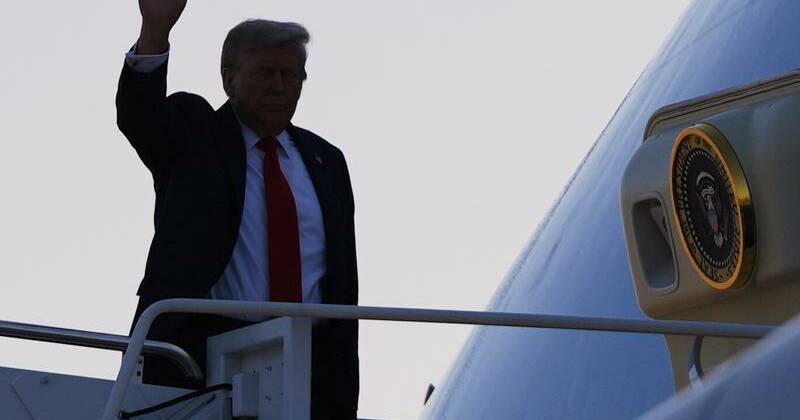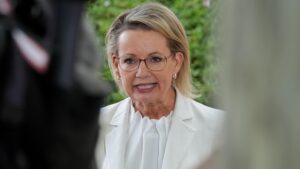
United States President Donald Trump has embarked on a significant diplomatic mission, departing Washington aboard Air Force One to meet with Russian President Vladimir Putin in Alaska. The meeting aims to explore a potential ceasefire deal concerning the ongoing conflict in Ukraine. Accompanied by key officials including Secretary of State Marco Rubio, Treasury Secretary Scott Bessent, and CIA Director John Ratcliffe, Trump’s delegation reflects the high stakes of these discussions.
Trump has characterized this meeting as crucial, referring to it as “HIGH STAKES!!!” on his social media platform before his departure. This summit marks the first in-person talks between a U.S. and Russian leader since 2021, and it takes place amid concerns from Ukrainian President Volodymyr Zelenskiy and European allies about the implications for Ukraine’s sovereignty. They fear Trump may agree to terms that could effectively freeze the conflict, potentially recognizing Russian control over approximately one-fifth of Ukrainian territory.
The summit, set to begin at 11:00 on Friday (5:00 on Saturday AEST), will take place at a Cold War-era air force base. Trump hopes to leverage a truce in the conflict, which has persisted for over three years, to bolster his candidacy for the Nobel Peace Prize. For Putin, the meeting is an opportunity to showcase Russia’s renewed standing in global diplomacy, countering years of Western isolation efforts.
As the conflict intensifies, both leaders seek to draw meaningful conclusions from their discussions. Trump acknowledged the complexity of the situation, admitting the war has proven to be more challenging than he anticipated. He emphasized the importance of potentially setting up a subsequent three-way summit involving Zelenskiy, should Friday’s negotiations yield positive outcomes.
Recent communications suggest that the Kremlin may be open to compromise, with indications that Russia’s economic vulnerabilities are becoming increasingly apparent. A source familiar with Kremlin perspectives indicated that Moscow recognizes the high costs associated with continuing military operations in Ukraine. Furthermore, a call earlier in the week indicated Trump’s agreement that Ukraine should be included in any talks regarding territorial concessions. Zelenskiy also reported that Trump supported the concept of security guarantees for Ukraine.
The backdrop of these negotiations includes Russia’s waning economic strength and the threat of additional U.S. sanctions. Trump has stated he may impose tariffs on Russian crude oil buyers, particularly targeting nations like China and India. On the eve of the summit, Putin presented a possible avenue for discussion, hinting at a new nuclear arms control agreement that could replace the existing treaty expiring in February 2026.
While there is cautious optimism regarding a potential breakthrough, the details surrounding a ceasefire remain contentious. Putin has set forth stringent conditions for any agreement, emphasizing that verification processes must be established to ensure compliance. Zelenskiy has accused Putin of using delay tactics to evade U.S. sanctions and has firmly rejected any formal territorial concessions to Russia.
Trump has suggested that land transfers could be a viable option to alleviate the deadlock. Nonetheless, Ukraine has made it clear in discussions with Western allies that it requires strong security guarantees from the United States. Putin’s stated demands for a cessation of hostilities include the withdrawal of Ukrainian forces from key areas in the Donetsk, Zaporizhzhia, and Kherson regions, covering approximately 21,000 sq km. He has also insisted that Ukraine formally abandon its NATO aspirations and declare neutrality.
As the world watches the outcome of this pivotal meeting, the implications for Ukraine’s future and the broader geopolitical landscape remain uncertain. The discussions in Alaska could redefine relations between the United States and Russia, while also determining Ukraine’s path forward in a conflict that continues to shape the region’s stability.







